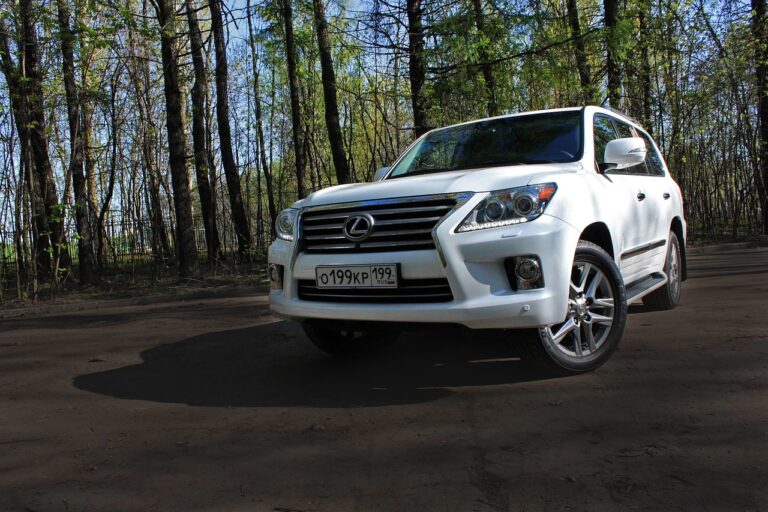IoT in Vehicle Tracking Systems: Enhancements and Trends
lotus book 365, play exchange 99, all panel.com:The integration of Internet of Things (IoT) technology in vehicle tracking systems has revolutionized the way we monitor and manage our fleet of vehicles. With real-time data tracking, advanced analytics, and remote control capabilities, IoT has brought about significant enhancements to traditional vehicle tracking systems. In this article, we will explore the latest trends and advancements in IoT-powered vehicle tracking systems.
Real-time Tracking and Monitoring
One of the key benefits of IoT technology in vehicle tracking systems is the ability to track and monitor vehicles in real-time. With GPS technology and sensors installed in vehicles, fleet managers can get a real-time view of their entire fleet, including the location, speed, and status of each vehicle. This real-time data helps in optimizing routes, improving efficiency, and ensuring timely deliveries.
Predictive Maintenance
IoT-enabled vehicle tracking systems can also help in predicting and preventing maintenance issues before they occur. By monitoring vehicle performance data, such as engine temperature, fuel consumption, and mileage, fleet managers can detect potential issues early on and schedule maintenance proactively. This predictive maintenance approach not only reduces unplanned downtime but also extends the lifespan of vehicles.
Improved Safety and Security
IoT technology enhances the safety and security of vehicles by providing real-time alerts and notifications in case of emergencies. For example, if a vehicle deviates from its planned route or exceeds speed limits, the system can automatically send alerts to the fleet manager. In the event of theft or unauthorized access, IoT-powered vehicle tracking systems can track the location of the vehicle and even remotely disable it, preventing any potential misuse.
Enhanced Data Analytics
IoT-enabled vehicle tracking systems generate vast amounts of data that can be analyzed to gain valuable insights and improve operations. By analyzing data on vehicle performance, driver behavior, and fuel efficiency, fleet managers can identify trends, patterns, and areas for improvement. This data-driven approach allows for informed decision-making and continuous optimization of fleet operations.
Remote Control Capabilities
Another significant enhancement brought about by IoT technology in vehicle tracking systems is remote control capabilities. Fleet managers can remotely monitor and control vehicles, such as locking/unlocking doors, disabling engines, or adjusting settings. This remote control functionality not only enhances security but also allows for efficient management of vehicles, especially in emergency situations.
Integration with Mobile Applications
The integration of IoT technology with mobile applications has made vehicle tracking systems more accessible and user-friendly. With mobile apps, fleet managers can track vehicles, receive notifications, and access real-time data from anywhere, at any time. This mobile integration enhances the flexibility and convenience of managing fleet operations, while also enabling quick decision-making on the go.
Future Trends in IoT-Powered Vehicle Tracking Systems
As IoT technology continues to evolve, we can expect to see further enhancements and innovations in vehicle tracking systems. Some of the future trends in IoT-powered vehicle tracking systems include:
1. Autonomous Vehicle Tracking: With advancements in artificial intelligence and self-driving technology, we may see the emergence of autonomous vehicle tracking systems that operate without human intervention.
2. Blockchain Integration: The integration of blockchain technology in vehicle tracking systems can enhance data security, transparency, and traceability, ensuring the integrity of vehicle data and transactions.
3. Environmental Monitoring: IoT-powered vehicle tracking systems may incorporate environmental sensors to monitor air quality, emissions, and other environmental factors, enabling eco-friendly and sustainable fleet management practices.
4. Predictive Analytics: Advanced analytics and machine learning algorithms will further improve predictive capabilities, allowing fleet managers to anticipate maintenance issues, optimize routes, and improve fuel efficiency proactively.
5. Integration with Smart Cities: Vehicle tracking systems may integrate with smart city infrastructure to improve traffic management, reduce congestion, and enhance overall urban mobility.
FAQs
1. What are the benefits of IoT technology in vehicle tracking systems?
IoT technology in vehicle tracking systems offers benefits such as real-time tracking and monitoring, predictive maintenance, improved safety and security, enhanced data analytics, remote control capabilities, and integration with mobile applications.
2. How does IoT technology improve fleet management operations?
IoT technology enhances fleet management operations by providing real-time data tracking, advanced analytics, remote control capabilities, and predictive maintenance, leading to optimized routes, improved efficiency, and reduced downtime.
3. What are some future trends in IoT-powered vehicle tracking systems?
Some future trends in IoT-powered vehicle tracking systems include autonomous vehicle tracking, blockchain integration, environmental monitoring, predictive analytics, and integration with smart cities.
In conclusion, IoT technology has brought significant enhancements to vehicle tracking systems, revolutionizing fleet management operations and paving the way for future innovations. By leveraging real-time data tracking, predictive maintenance, improved safety and security, advanced data analytics, remote control capabilities, and mobile integration, IoT-powered vehicle tracking systems are transforming the way we monitor and manage our vehicles. As technology continues to evolve, we can expect even more exciting advancements in the field of IoT-powered vehicle tracking systems. Stay tuned for the latest trends and innovations in this space.







